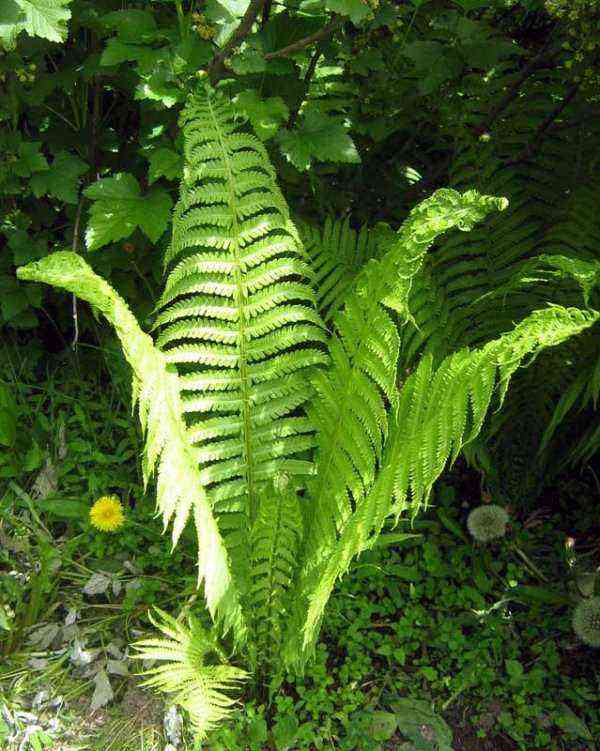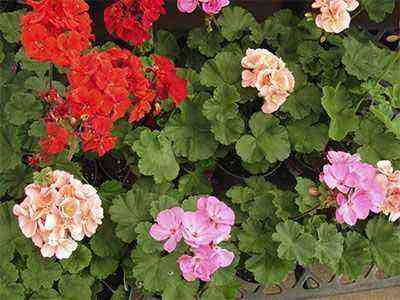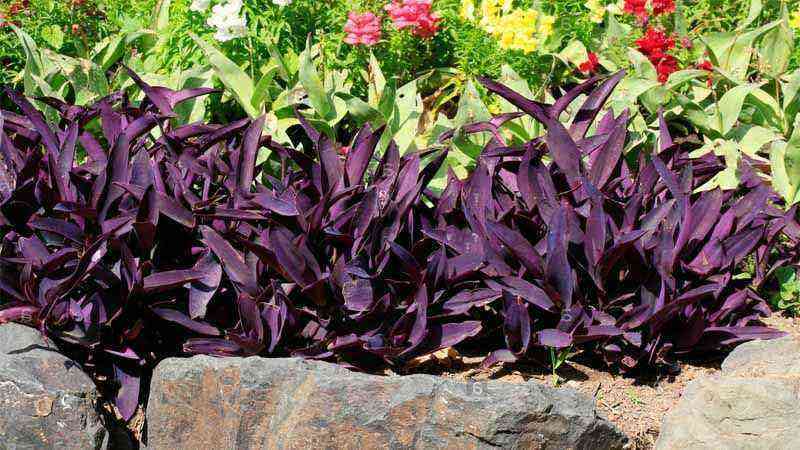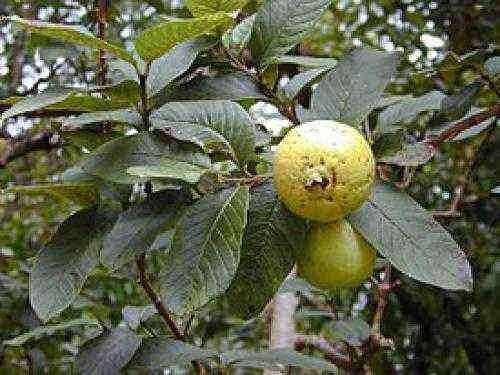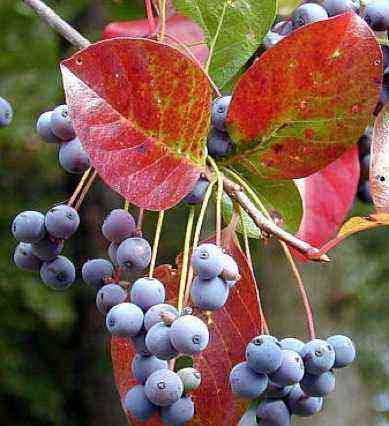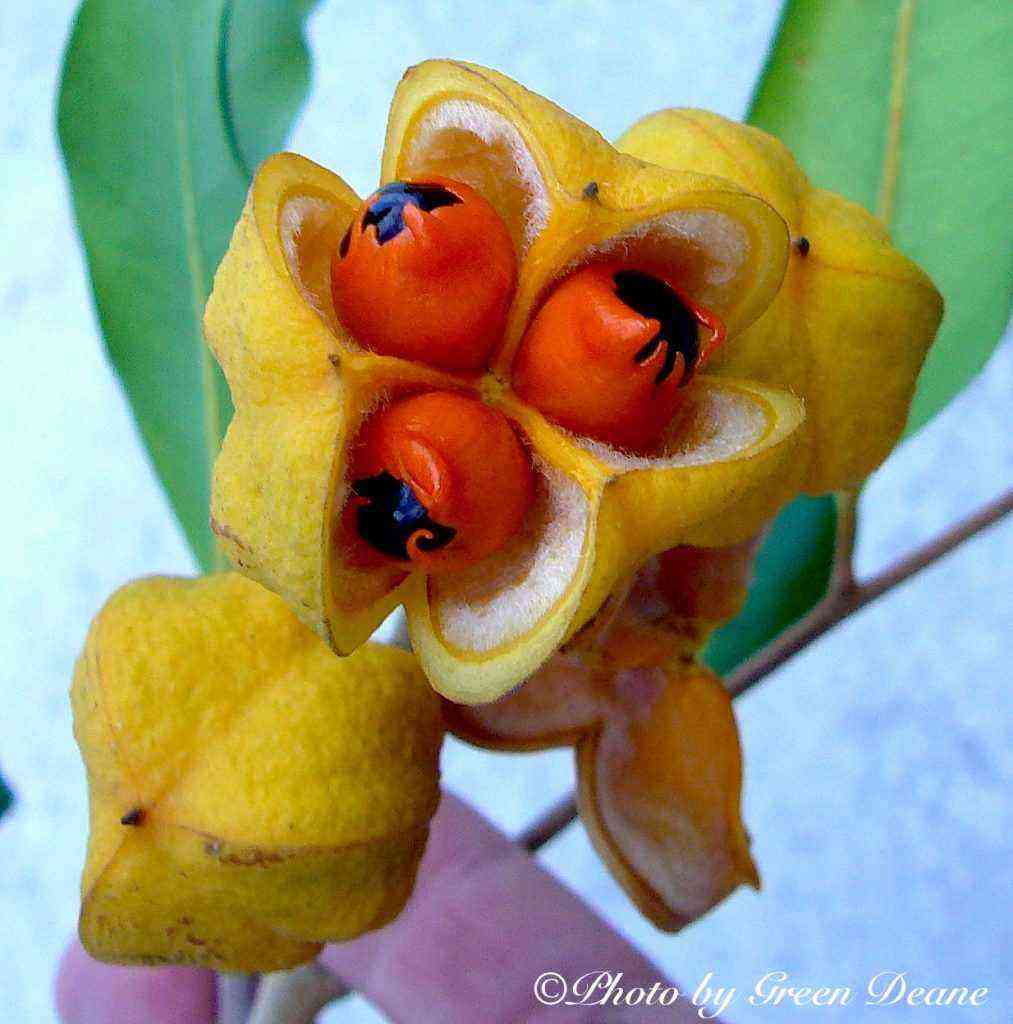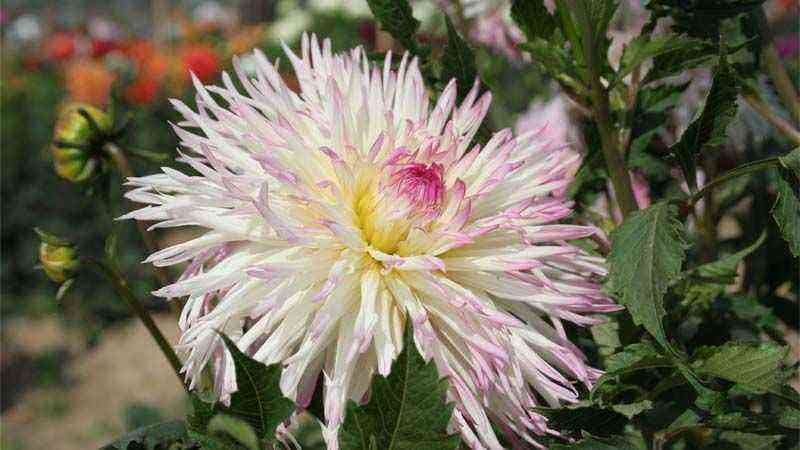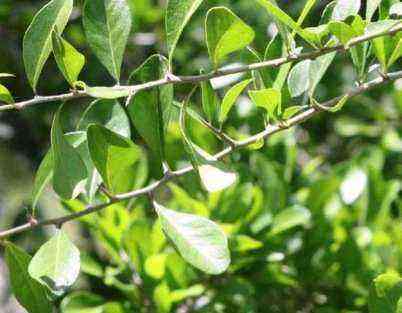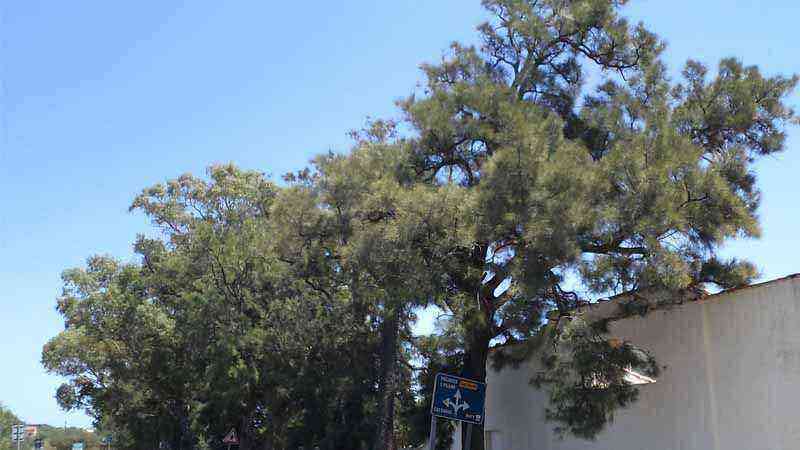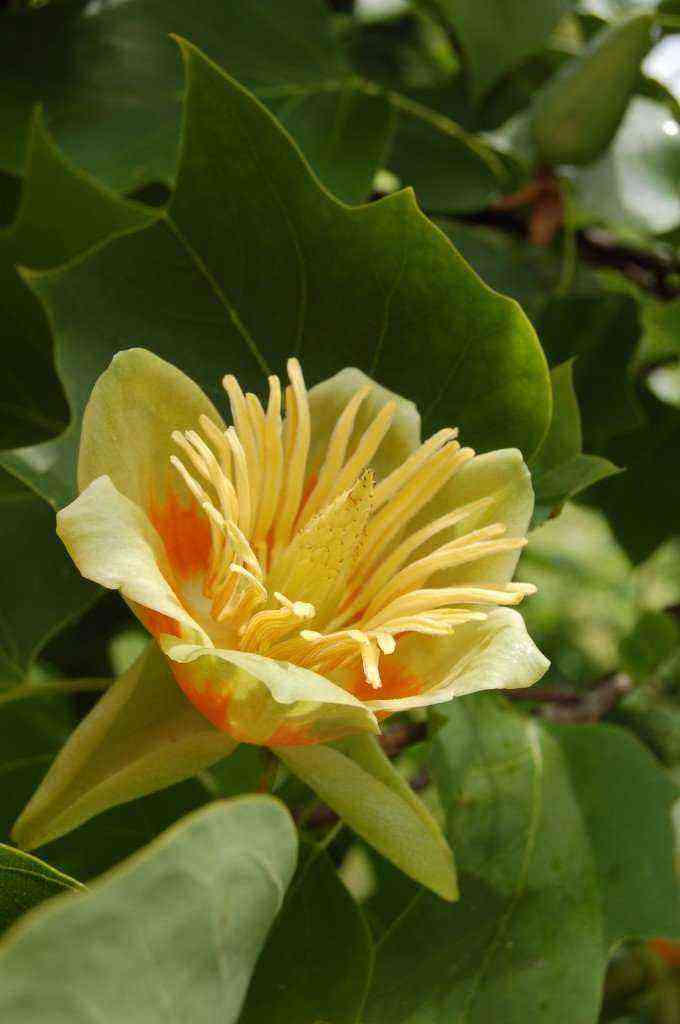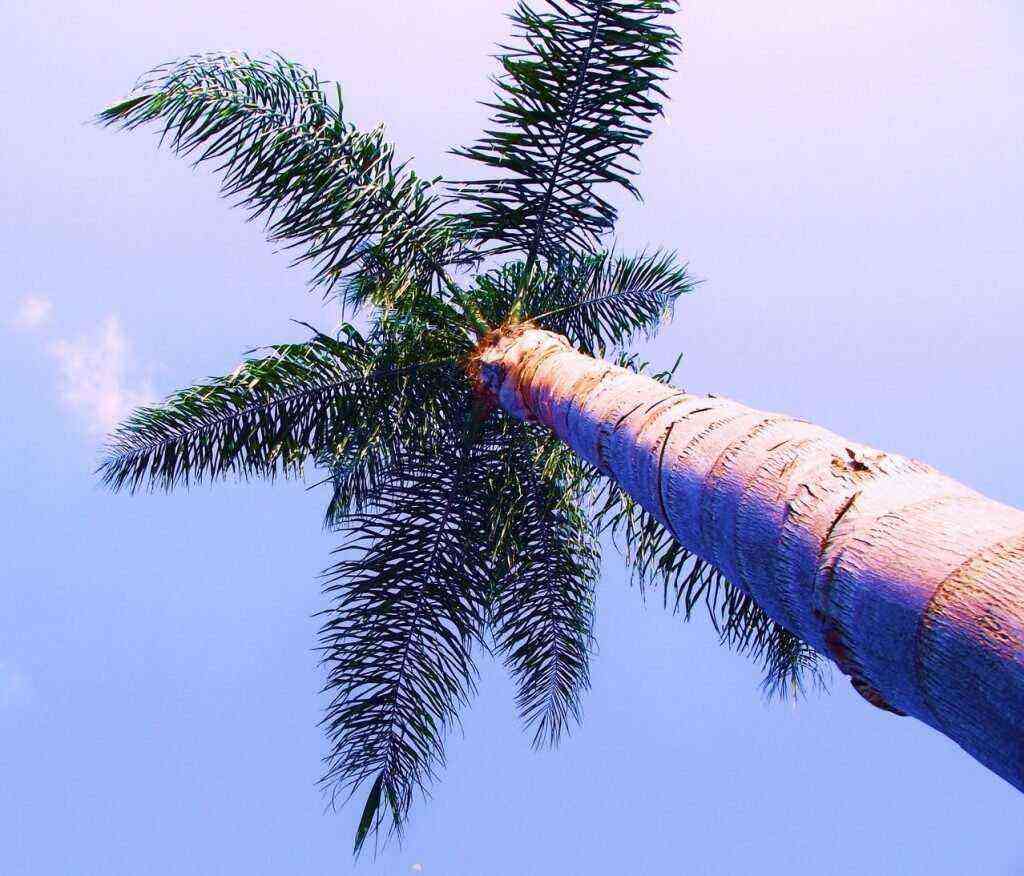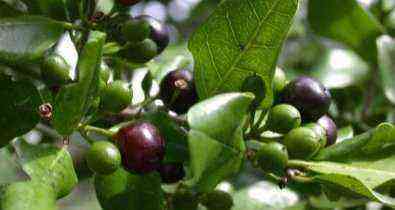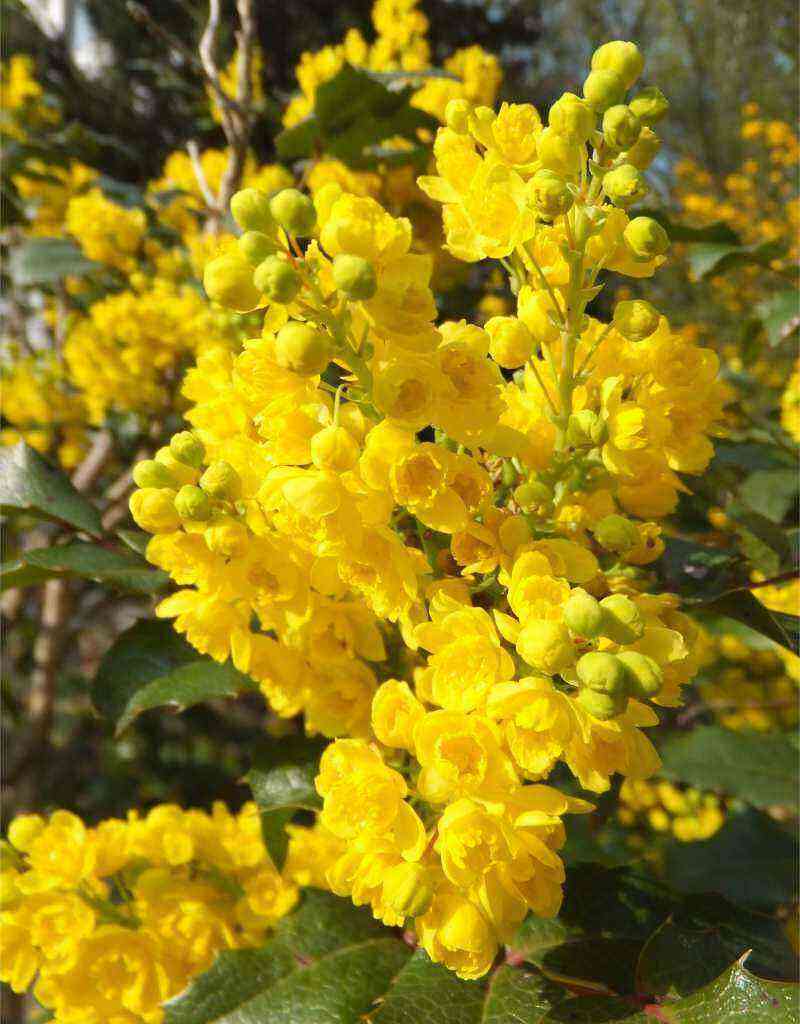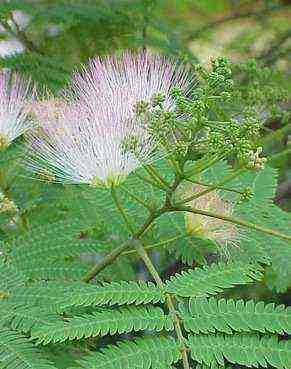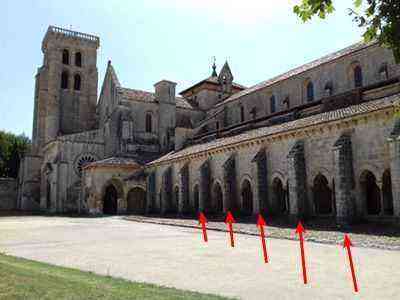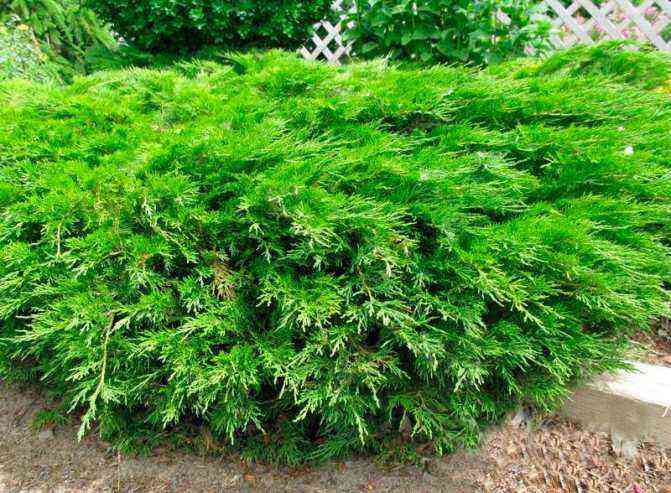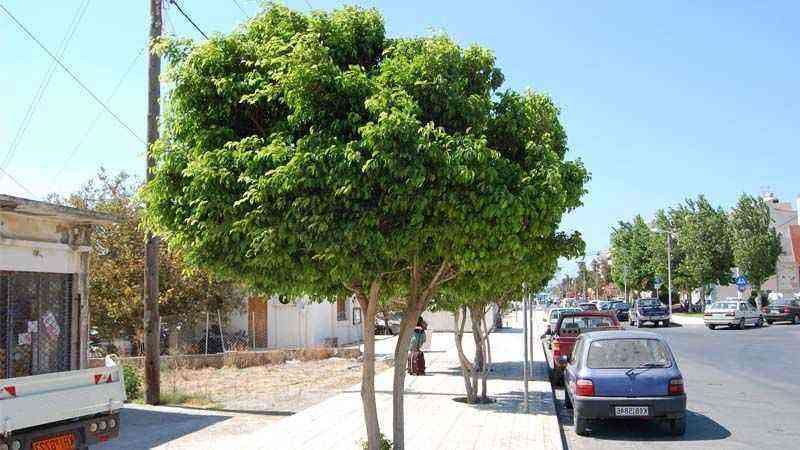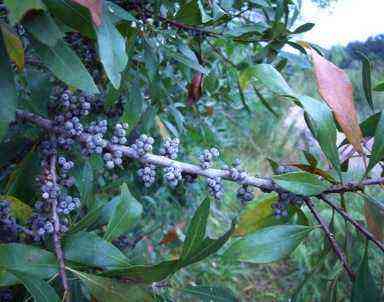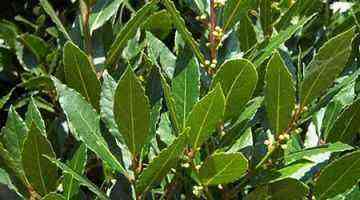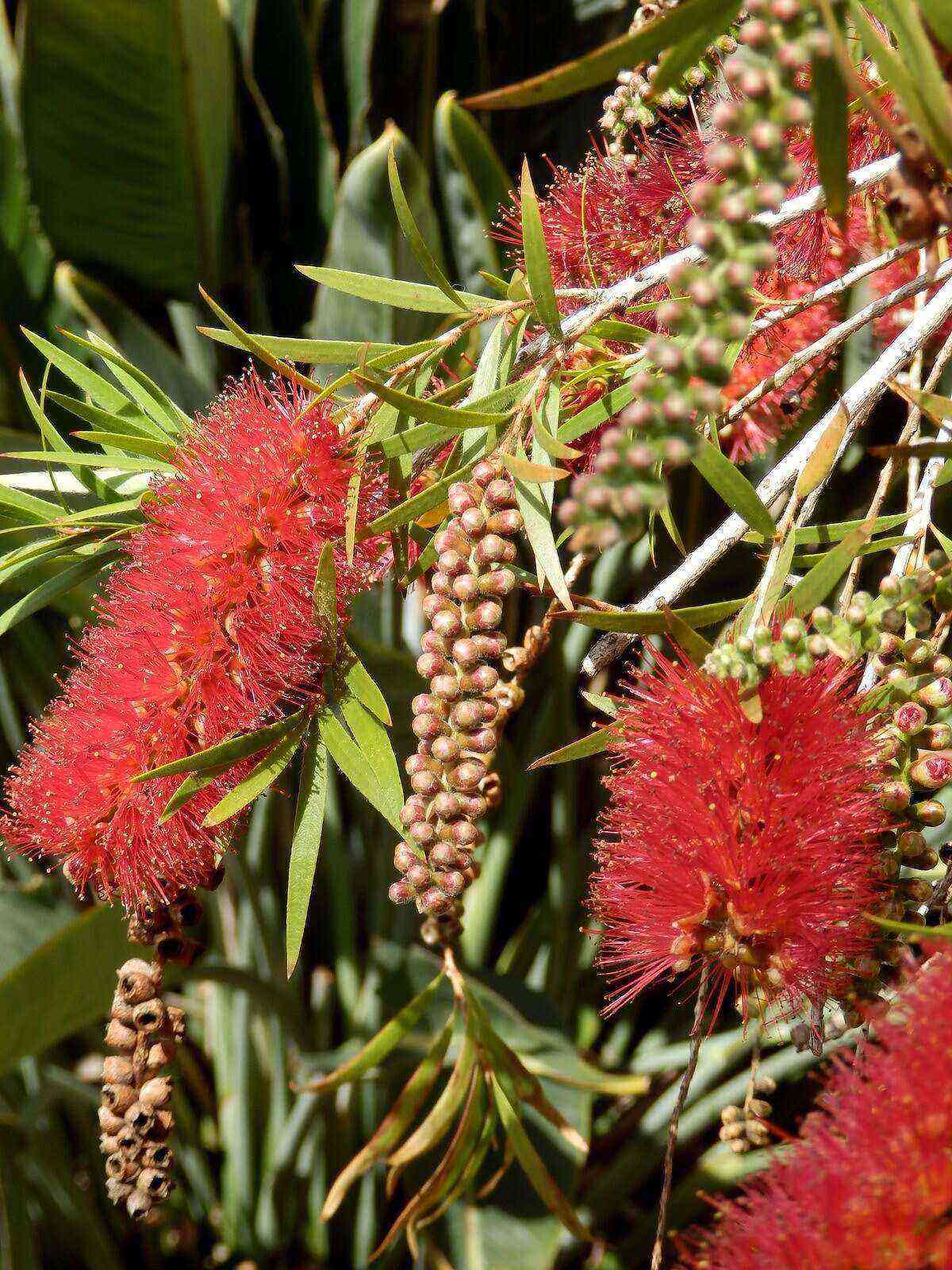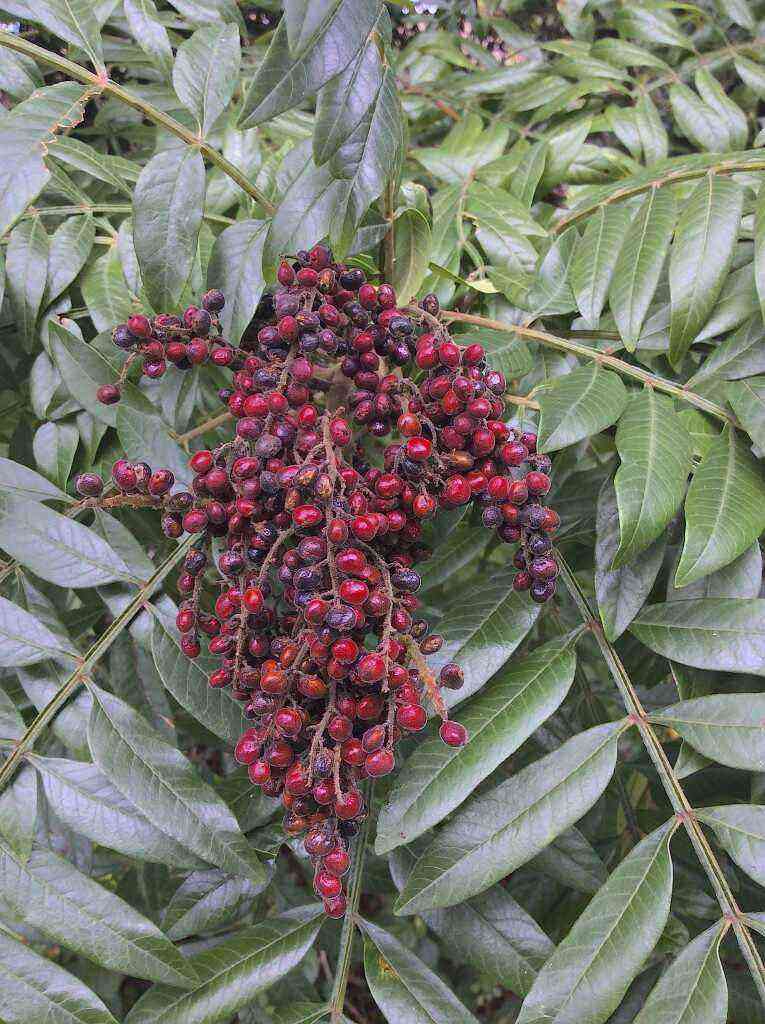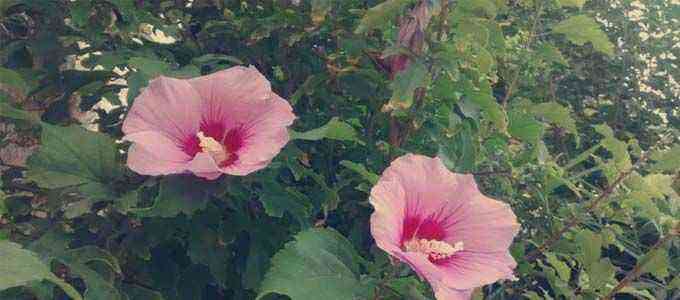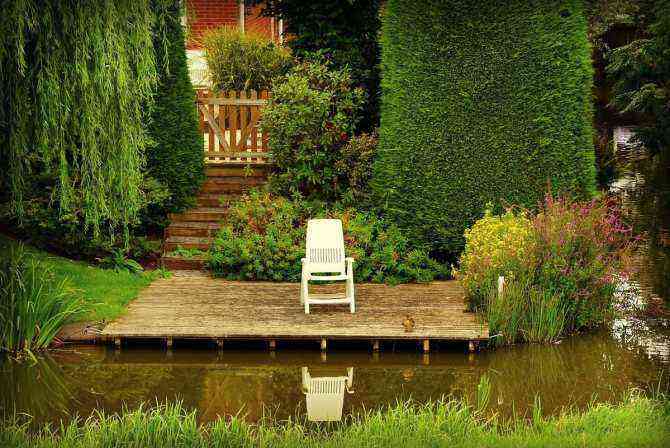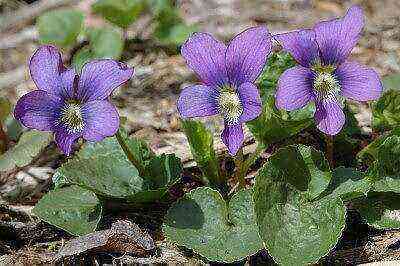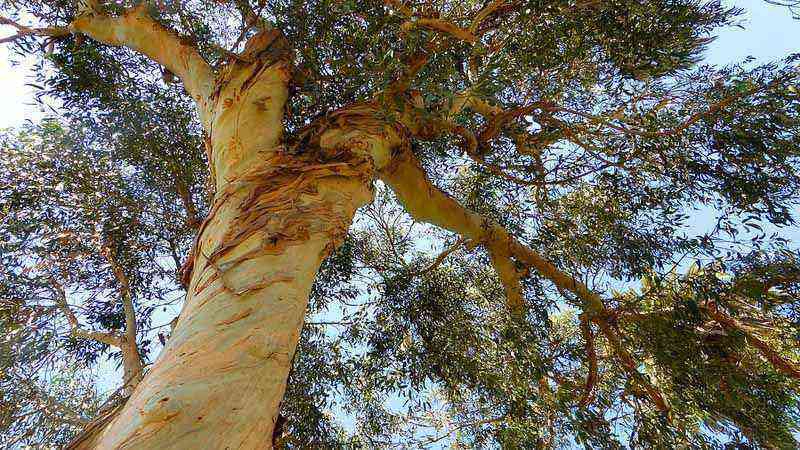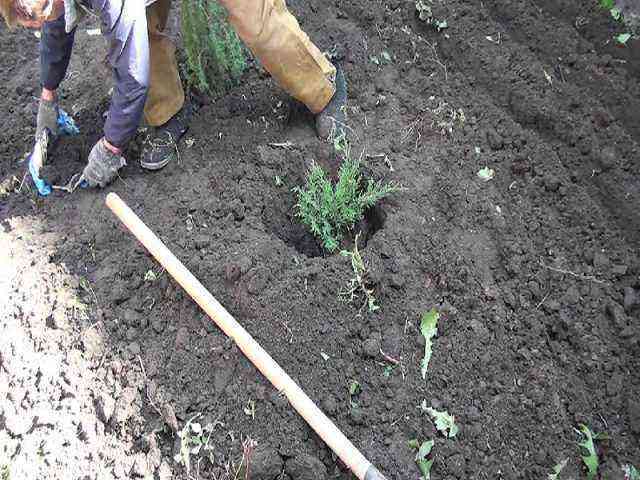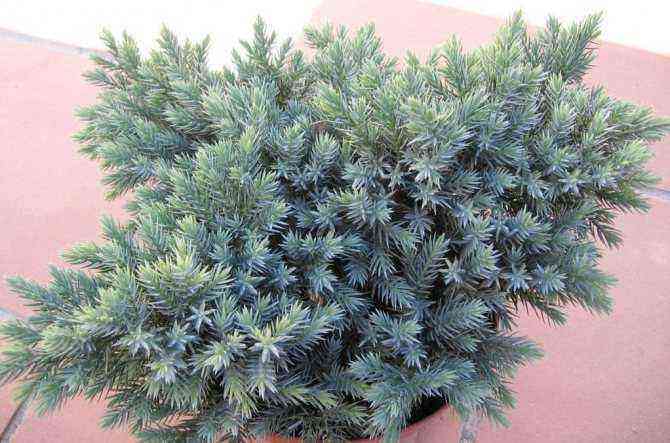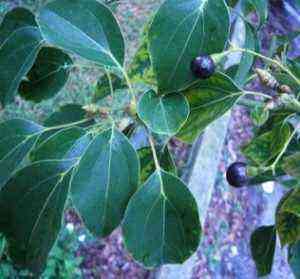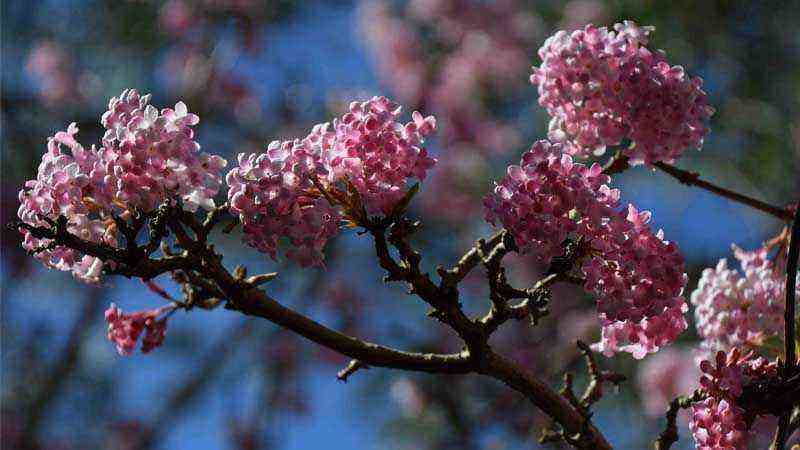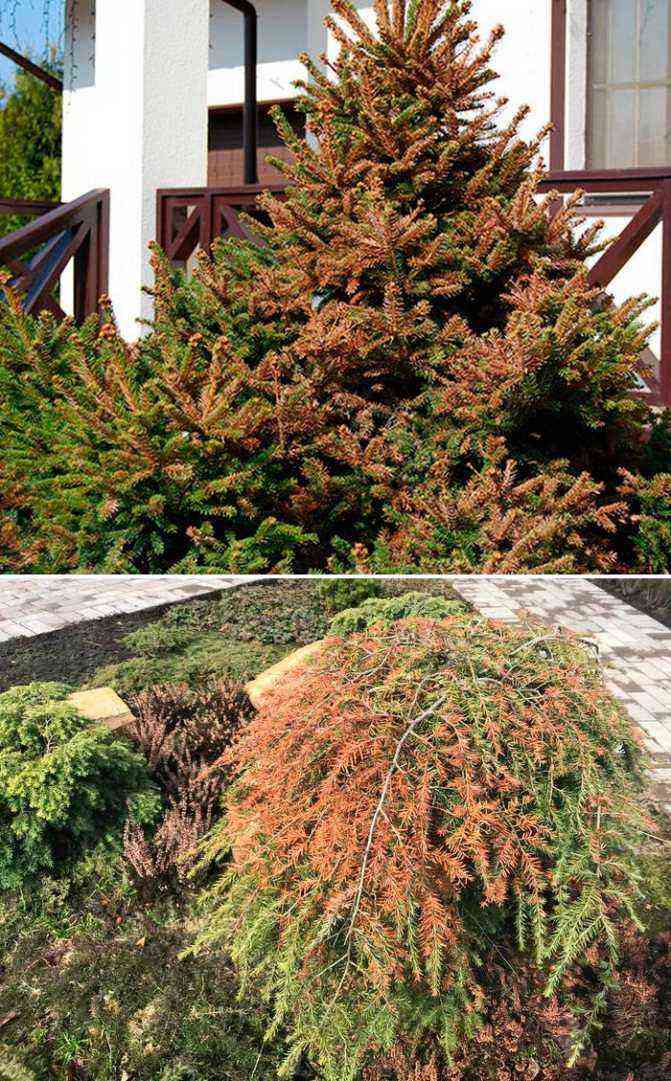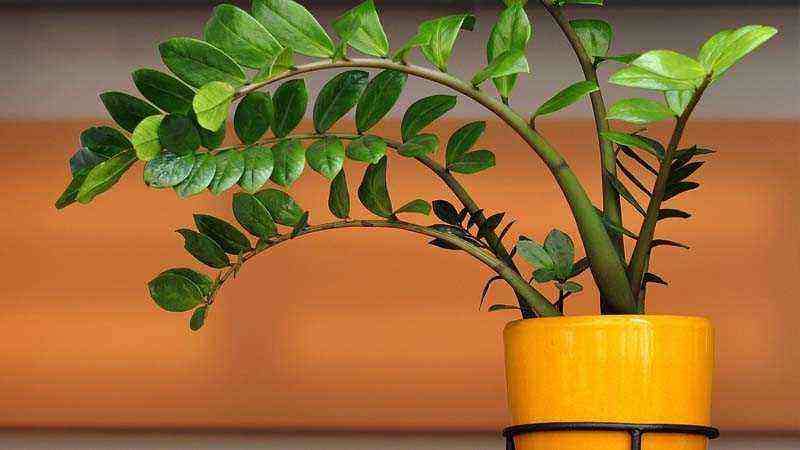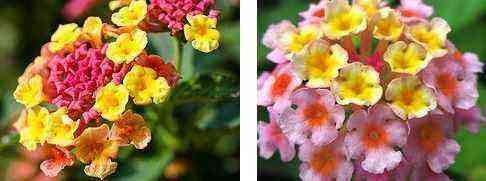Types
All Ostriches have vertical, thick leaves. They can reach a height of 2 meters. The leaves are outwardly similar to ostrich feathers, which is why this type of fern got its name. The leaves form a funnel, in the center of which there are low spore-bearing leaves.
There are several types of Ostrich: common and oriental.
Ordinary
Fern The common ostrich is considered the most popular. It grows quickly not afraid of frost and does not require special care. The leaves are wide, the frond is light green, broad and feathery.
The common Ostrich is also called the variegated or black fern due to the dimorphism of the leaves and the characteristic black color of the stem.
One of the specimens of this subspecies in the photo below:
This type of fern included in the Red Book several regions of Russia and Ukraine.
Oriental
The Eastern Ostrich has large fronds that gather in bunches. The fern can be up to 1,5 meters high. The leaves are feathery, the feathers themselves are narrow and curled. The leaf stalks are covered with brown films.
Unlike the common one, the eastern Ostrich has larger first-order feathers. But their number is somewhat less.Eastern fern is more finicky and requires regular moisture and protection from the winds.
Look at the photo below for what the Eastern subspecies looks like:
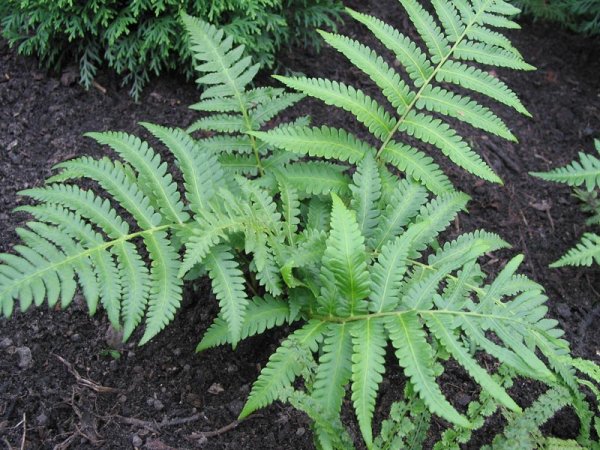
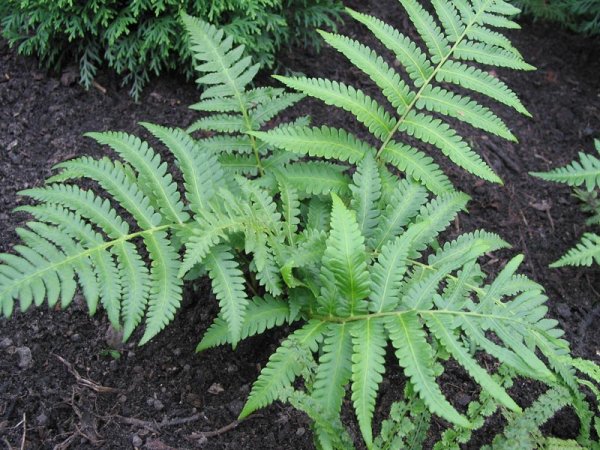
Classification
The population of the common ostrich in eastern North America was identified by some Canadian botanists as an independent species Matteuccia pensylvanica (Willd.) Raymond – Pennsylvanian ostrich … Eric Hulten considered it just a special race of the common ostrich …
Varieties
Several varieties are distinguished on the territory of North America:
- Matteuccia struthiopteris var. pensylvanica (Willd.) CVMorton, 1950
- Matteuccia struthiopteris var. pubescens (Terry) Clute, 1908
Synonyms
According to The plant list
for 2013 .., the synonyms of the species include:
- Matteuccia nodulosa Fernald
- Matteuccia pensylvanica (Willd.) Raymond
- Onoclea pensylvanica (Willd.) Sm.
- Pteretis pensylvanica (Willd.) Fernald
- Struthiopteris nodulosa Desv.
- Struthiopteris pensylvanica Willd.
Photo
For more photos of the Ostrich fern, see below:

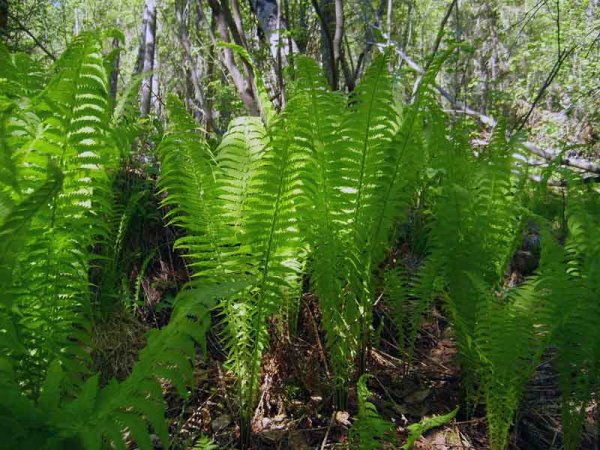
Read more about common fern species here.
Application in landscape design
The main application of the ostrich operator is the use of individual plots or park areas in landscape design. The photo shows that the ostrich feather fern can be an adornment of almost any composition. It can be planted among stones and boulders or on the banks of water bodies.


The ostrich is well adjacent to tall large flowers, like irises or peonies.


When grown in shady areas, the ostrich can accompany the hosta or daylilies.


You can often find a fern next to early spring flowers – tulips and daffodils, growing, the ostrich covers already faded plants.


As for the undesirable neighborhood, it is not recommended to plant a fern next to light-loving low flowers (zinnias, petunias, marigolds), since the ostrich will block the planting from the sun’s rays. It should also be remembered that the plant has a highly developed, rapidly growing rhizome, which can crush weaker neighbors.

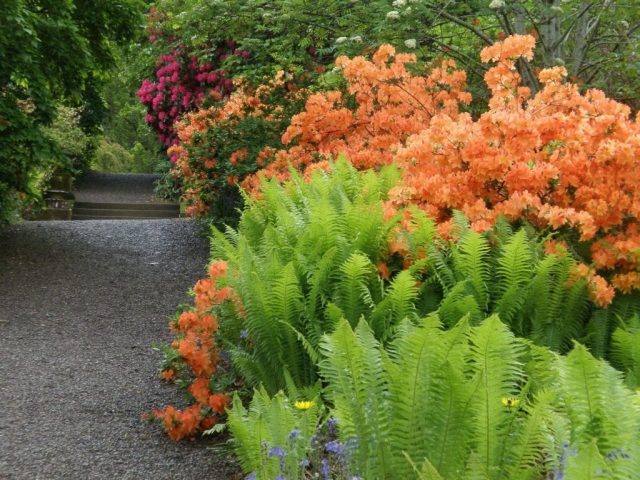
Common ostrich: planting and care
At home, they are most often used fern common ostrichsince he more frost-resistant and grows well on poor and rich soils.
Features of care after purchase
The ostrich is resistant to low temperatures and is not picky about the composition of the soil. But when buying, it should be borne in mind that it will require strong moisture. The place can be either shaded or open.
For planting, fronds are used. They must be planted, sprinkling with earth and watering abundantly.
Lighting


The plant is not whimsical to sunlight. The fern grows well both in the shade and in bright light. But keep in mind that a plant growing in the sun, even with sufficient moisture, will be small in size.
Temperature
The ostrich is not afraid of a drop in temperature and therefore is often used to decorate gardens in temperate latitudes.
The ostrich can tolerate temperatures up to -10 degrees.
But high temperatures from 25 degrees are unacceptable for him. Their plant does not tolerate well.
Other winter-hardy ferns suitable for cultivation in the garden or on the backyard include: Orlyak, Kochedyzhnik, Osmunda, Bubble, Maidenhair, Mnogoryadnik, Shitovnik
Air humidity
Like most fern species, the plant does not tolerate dry air. In dry weather, spray on the fern.
Watering
The ostrich is an unpretentious plant, but it needs a humid environment. During dry periods it is necessary to provide him with sufficient watering.
Fertilizers (top dressing)
Both mineral compositions and organic matter can be used as fertilizer. You can use them at will, since the fern is not picky.
Transfer

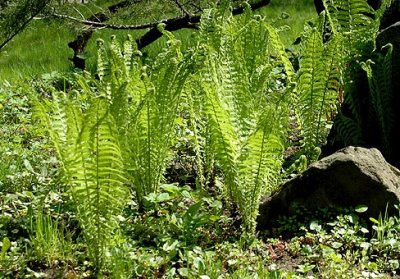
It is worth replanting the fern in the spring. For this, a young plant is dug up.
If necessary, you can transplant the fern at the end of summer using a piece of the mother rhizome with a bud.
Pruning and seating
Cropping is not applied.
But once every three years the Ostrich must be thinned outas this perennial plant grows quite strongly. It must be used with caution in group plantings.
Notes
- Matteuccia struthiopteris
: Information about the taxon in the Plantarium project (plant identifier and illustrated species atlas). - ↑ 12N.N. Kaden, N.N. Terentyeva.
Etymological dictionary of Latin names of plants found in the vicinity of the agrobiostation of the Moscow State University “Chashnikovo” / Moscow State University. M. V. Lomonosov; Biol. fact; Ed. Cand. philol. Sciences, Assoc. V.I. Miroshenkova. – M .: Publishing house of Moscow. University, 1975 .– S. 149. - ↑ 1234
Botanical Dictionary. Reference book for botanists, rural owners, gardeners, forest growers, pharmacists, doctors, drogistov, travelers across Russia and rural residents in general / Compiled by N. Annenkov. – SPb .: Type. Imp. Acad. nauk, 1878. – S. 344-345. - ↑ 12K. V. Nekhlyudova, V. R. Filin.
Common ostrich // Biological flora of the Moscow region; ed. prof. V. N. Pavlova, Corresponding Member RAS V. N. Tikhomirov. – M .: Publishing house of Moscow. University, 1993. – Issue. 9. Part I. – P. 4-31. – ISBN 5-211-02853-8. - ↑ 12Hultén, Eric.
The circumpolar plants. 1, Vascular cryptogams, conifers, monocotyledons (English) // Kungl. The Swedish Academy of Sciences’ documents, Ser. 4. – Stockholm: Almqvist & Wiksell, 1962. – Vol. 8. – № 5. – P. 1—125. - Kato M., Iwatsuki K.
Phytogeographic relationships of pteridophytes between temperate North America and Japan (англ.) // Ann. Missouri Bot. Gard. — 1983. — Vol. 70, № 4. — P. 724—733. - Prange RK, Aderkas P. von.
The Biological Flora of Canada. 6. Matteuccia struthiopteris (L.) Todaro, ostrich fern // Canadian Field-Naturalist. — 1985. — Vol. 99, № 4. — С. 517—532. - ↑ 1234
Subfamily of Kochedzhnikov (Athyrioideae) // Plant Life: In six volumes / Ch. ed. Corresponding Member USSR Academy of Sciences, prof. Al. A. Fedorov; ed. prof. I. V. Grushvitsky and Cand. biol. Sciences S.G. Zhilina. – M .: Education, 1978. – T. 4: Mosses, moss, horsetails, ferns, gymnosperms. – S. 232 .– 447 p. – 300 copies - ↑ 123
Ostrich // Biological encyclopedic dictionary / Ch. ed. M. S. Gilyarov; Editorial board .: A. A. Babaev, G. G. Vinberg, G. A. Zavarzin and others – 2nd ed., Rev. – M .: Sov. encyclopedia, 1986. – 150 copies. – ISBN 000-5-85270-002. - Ostrich // Biology. Encyclopedia / Ch. ed. A.P. Gorkin. – M .: Rosmen-Press, 2006 .– 560 p. – (Modern Illustrated Encyclopedia). – 10 copies – ISBN 000-5-353-02413.
- Raymond M.
Some minor new entities of the flora of Quebec. I (фр.) // Natur. Canadian. – 1950. – Vol. 77, № 1—2. – P. 55-71. - Matteuccia struthiopteris
(L.) Tod. is an accepted name (англ.).
The Plant List (2013). Version 1.1. Published on the Internet;
… Royal Botanic Gardens, Kew and Missouri Botanical Garden (2013). Retrieved February 1, 2020. - I. V. Karatygin
The orders are Tafrin, Protomyceae, Exobasidiae, Microstromaciae. – SPb .: “Science”, 2002. – P. 20. – (Keys to mushrooms of Russia). – ISBN 5-02-026184-X. - ↑ 123456
Part I – Families Lycopodiaceae – Ephedraceae, part II – Additions to volumes 1-7 // Plant resources of Russia and neighboring states / otv. ed. A. L. Budantsev; Bot. in-t them. V.L. Komarov RAS. – SPb .: Mir and family-95, 1996 .– P. 37 .– 571 p.
Reproduction
The ostrich reproduces by spores and leaves – vayami.
Disputes
Reproduction by spores is akin to reproduction by seeds, but more complex and laborious, but effective.
Disputes are collected in late summer – early autumn.
Then they can be stored for a long time or immediately sown in containers with disinfected litter peat, covered with glass and periodically moistened.
After 3-5 weeks, sprouts will begin to appear. They are transplanted into a mixture of sand, heather soil and peat chips, where the fern grows for several more years, after which it can be planted in selected areas.
Vegetative
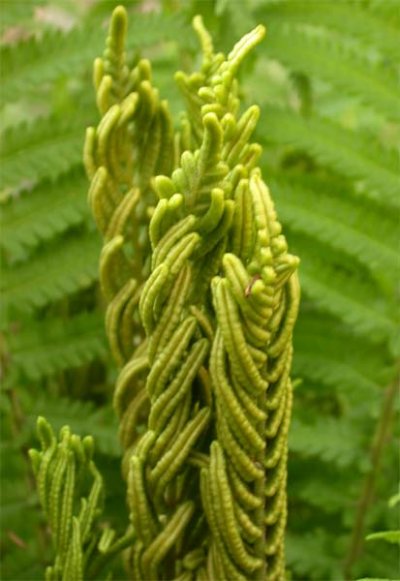
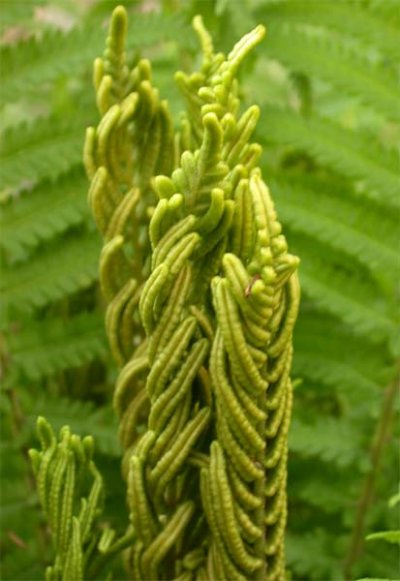
For vegetative propagation, underground processes of a plant with several buds are used. This type of breeding is used in early spring or late summer.
The shoots are planted at a distance of half a meter from each other.
How fern reproduces ostrich feather
Ferns are among the oldest plants that arose even before the appearance of bees. It is with this that the lack of flowers in this plant is connected – it does not need pollination and seed development.
There are 2 ways to breed a fern:
- Vegetative – by separating part of the root with sprouts and buds.
- Through a dispute. Disputes develop on fronds located in the center of the rosette. They are collected at the end of summer and planted in a small closed container, regularly watering and airing. After 1-2 years, when the sprouts get stronger, they can be planted directly on the site.

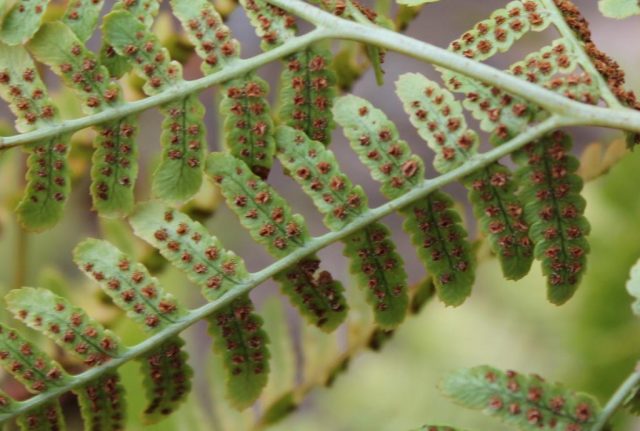
HELLO FROM PALEOZO
These plants appeared on our planet more than 400 million years ago. At that time, large tree ferns dominated the Earth. Most of them have disappeared, and now herbaceous forms prevail among 10 species of these plants.
For the shape of the leaf (frond), this fern is called an ostrich feather or simply an ostrich.
The feathery leaves of the common ostrich, like other ferns, are called fronds or flat-branches. They resemble shoots rather than leaves. Vayi have apical growth and can reach impressive sizes. They appeared in ferns as a result of flattening of the branches of ancient ancestors. This increased the surface area and increased the efficiency of photosynthesis.
Landscaper in landscape design
These unusual plants are very often used by landscape designers in the design of garden plots or park areas. Due to its bright and unusual appearance, it looks great in almost any composition and even on its own. Fern looks great among boulders or stone fence. Very often, the shores of reservoirs are decorated with ferns.
The ostrich looks great next to large flowers such as peonies or irises. But you should know that the fern grows very quickly and is quite aggressive towards other plants, suppressing them.
Very often the ostrich is used in winter bouquets. or creating compositions from dried flowers.
Description
The ostrich differs from other types of fern precisely in the shape of the bush. The leaves are arranged in a circle from the root and grow back at the same time, which forms such a beautiful funnel-shaped shape.
A feature of this species is the rapid growth of spores, the dispersal of which occurs in the spring. As the disputes dissipate, new ones are formed.
The ostrich is actively used by florists as an addition to bouquets. These leaves can retain their beauty for several years.
In the wild, the fern is found in mixed wet forests. Very common in Russia and the Far East… It can often be found near bodies of water..
